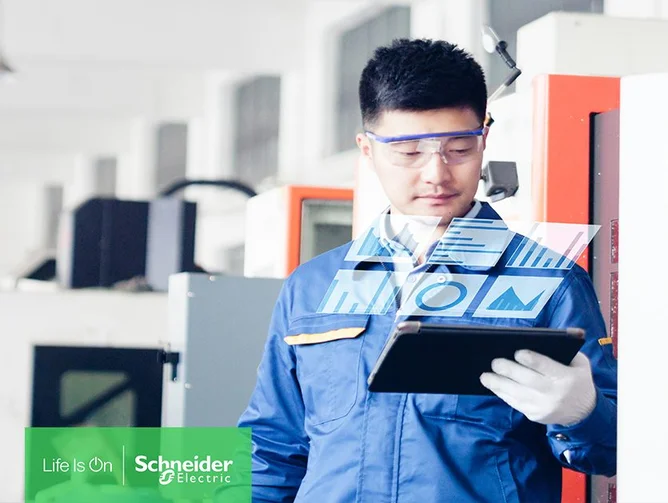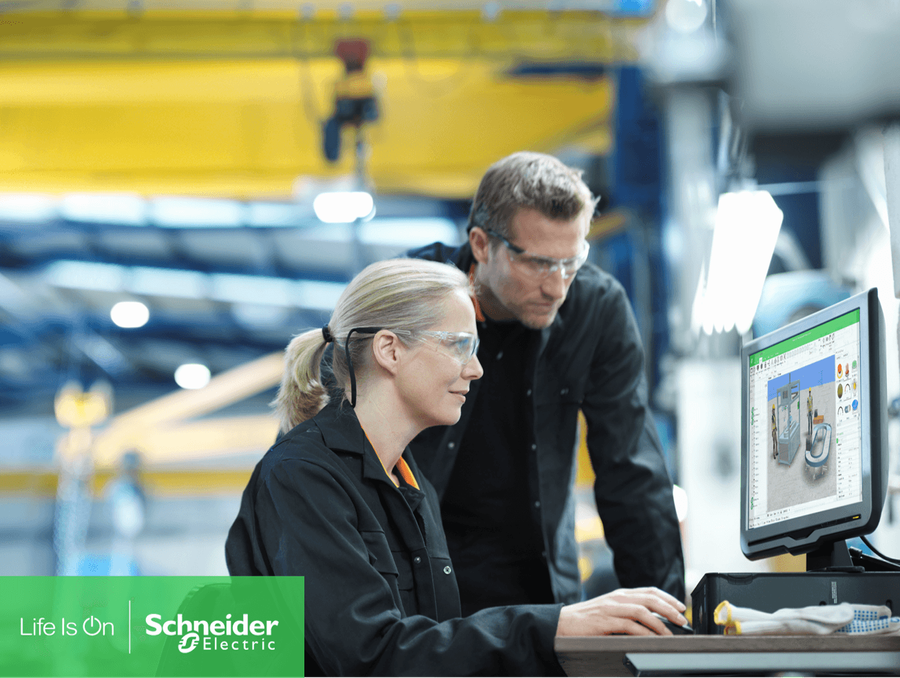Schneider Electric’s Stephane Piat explains how the Internet of Things (IoT) is enabling supply chain leaders to reach a new level of efficiency.
Schneider Electric is something of a giant when it comes to driving digital transformation.
In unrelenting fashion, this French multinational empowers people and businesses everywhere to make the most of their energy and resources, enabling meaningful progress and sustainable operations for all.
It is why so many companies can call Schneider their trusted partner when it comes to sustainability and efficiency.
Crucially, Schneider Electric offers world-leading expertise in electrification, automation and digitisation that can be harnessed in smart industries, resilient infrastructure, future-proof data centres, intelligent buildings and intuitive homes.
Anchored by deep domain expertise, the global industrial technology leader provides integrated, end-to-end lifecycle, AI-enabled Industrial IoT solutions with connected products, automation, software and services, delivering digital twins to enable profitable growth for its customers.
Increasingly, IoT and its subset, the Industrial Internet of Things, are being used by supply chain professionals to enhance efficiency, visibility and decision-making capabilities.
Stephane Piat, SVP Supply Chain Strategy & Performance at Schneider Electric, is well placed to explain IoT and how it can be applied to supply chain management.
His responsibilities include leading the digital transformation of Schneider’s supply chain as it strives for sustainable, resilient and reliable operations.
“IoT refers to any device, sensor, vehicle or appliance that is connected via the Internet to another device or system and can exchange information,” Stephane says.
“IIoT refers to the connectivity of industrial applications, devices, sensors and systems and is used to improve operational efficiency, productivity and safety in industrial settings.
“In terms of supply chain management, it can be used for asset tracking, predictive maintenance, improved inventory management and understanding how to operate more efficiently, for example by reducing water loss and emissions.”
IoT: Powered by data
At the heart of IoT is data.
It is central to the functioning of IoT because it drives the core value it provides in the form of intelligent decision-making, automation and enhanced operational efficiency.
IoT and IIoT provide companies with access to data and information they were previously unable to access, such as the real-time location of assets in transit or the operational performance and the health status of critical manufacturing equipment.
Businesses are then able to analyse and leverage the vast data generated by connected devices, converting it into strategies for optimisation.
“By interconnecting these devices,” Stephane continues, “businesses can use data insights to inform decision-making and enhance demand response.
“Additionally, this technology improves customer transparency, ensures environmental conditions are monitored and leads to cost savings.”
Schneider’s own EcoStruxure platform uses a combination of advancements in IoT, mobility, sensing, cloud, analytics and cybersecurity to enhance safety, reliability, sustainability, connectivity and more. Vital data is gathered from sensors and analysed to uncover valuable insights, empowering users to make informed decisions in real time – effectively driving the delivery and execution of services.
Shedding further light on the technology, Stephane adds: “We receive the logistics data from our domestic and international flows through our lead logistics and transportation providers in near-real time. It’s incredibly valuable and is analysed to take proactive actions and monitor and manage shipments to minimise the risk of delays.
“This not only helps us in tracking KPIs for our RFQ (Request for Quotation) processing and productivity calculations, but also enables us to effectively track and trace shipments to ensure on-time delivery in full.
“By harnessing this data, we can make informed decisions and optimise our operations to uphold high standards of efficiency and service delivery.”
Optimising inventory
Optimisation of inventory management is one of numerous specific areas where IoT can provide a boost to everyday activities.
Schneider Electric’s end-to-end control tower capabilities have become a single source of truth for the organisation and are key to its supply chain and inventory optimisation.
This has enabled real-time visibility for informed decision-making, automation including decision-making for transactional activities and increased execution reliability to ensure optimal quality and customer satisfaction.
“Before the control tower was established, when our customer care centre wanted to get more information pertaining to an order or delivery, the process was to raise a ‘customer request’,” Stephane says. “This was time-consuming, disconnected and manual. It wasn’t a great experience for our customers.
“Now, the information required is immediately at hand for our customers and customer care centre agents. Since the beginning of last year, this has helped to mitigate more than 350,000 change requests per annum being manually driven through our centres.”

Next-level predictive maintenance
Stephane believes the growth of IoT offers a huge opportunity to leverage existing data for the creation of proactive predictive maintenance strategies – driving improved business results in the process.
“Predictive asset analytics, enabled by the IIoT, is key to reducing unscheduled downtime and maintenance costs,” Stephane notes. “Using predictive analytics, customers are able to predict and diagnose problems before they occur.”
What’s more, by leveraging connected devices and sensors, organisations can proactively monitor the condition and performance of equipment in real time, assess safety risks, map premises for electrical installations, identify damaged equipment and source spare parts with a JIT (just-in-time) approach.
“This technology provides valuable data-driven insights about the performance and lifecycle of those assets,” Stephane goes on.
“Data is carefully managed and analysed, giving organisations the capability to predict when something is going to fail, allowing them to pre-emptively build in contingencies for potential outcomes. It also ensures safety and compliance, resiliency, efficiency and sustainability.”
What is next for IoT?
The past few disruption-dominated years have demonstrated just how integral well-functioning supply chains are to business operations.
Countless companies are investing a plethora of time and resources into creating more resilient, agile supply chains based on some tough lessons learned.
Stephane asserts that organisations ahead of the curve will already be leveraging the power of IoT and IIoT to make their supply chains more predictive – rather than reactive.
“This connected technology empowers companies to monitor their global supply chains centrally and can connect networks with dynamic situations and data points,” he adds.
“In the event of disruption, be it a natural disaster or strike at a port, for example, collected data can be harnessed to evaluate the collateral implications more quickly and present scenarios and automate points of action for informed decision making and demand response.”
A further positive looking ahead is that the integration of IoT and IIoT in supply chain management will likely usher in a new era of increased transparency and traceability across the entire supply chain.
Real-time data collection and analysis will enable companies to optimise processes, reduce waste and enhance overall efficiency.
“By leveraging IoT and IIoT technologies, we can gain deeper insights into their operations, identify potential bottlenecks and implement proactive measures to address issues before they escalate,” Stephane continues.
“This proactive approach will not only streamline supply chain operations but also improve customer satisfaction through faster and more accurate deliveries.”
Stephane’s parting thought is that IoT, combined with AI and hype-automation technologies, stands to drive us closer to an autonomous mode of supply chain management by automatically extracting high-quality insights from operational data and interpreting them back into pre-emptive actions for a self-adaptive supply chain.
He concludes: “The highly-structured and standardised data model inside IIoT/IoT will also lay a solid foundation for scaling and acceleration of AI-powered processes, delivering higher reliability and efficiency.”



